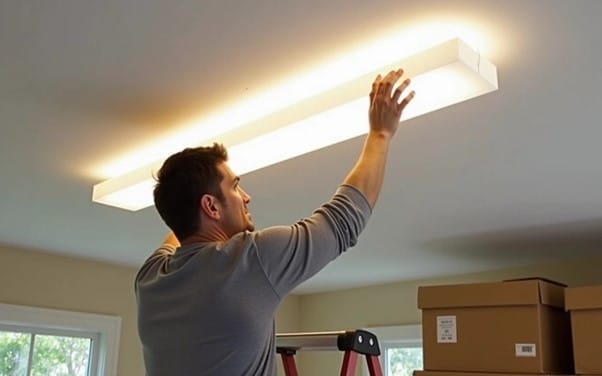Table of Contents
LED light tubes are a popular lighting solution for both residential and commercial spaces due to their energy efficiency and superior illumination quality. However, selecting the right LED tube for your space involves more than just picking a random model.
From understanding compatibility to assessing brightness and color temperature, here’s a guide to help you choose the perfect LED tube for your needs.
1. Assess Your Space and Lighting Needs
Before diving into technical specifications, evaluate the space where you plan to install LED light tubes. Consider the room’s purpose and the lighting requirements.
For example, workspaces like kitchens or offices may need bright, cool-toned light to boost focus and visibility, while living rooms or bedrooms might benefit from warm-toned, softer lighting for a cozy ambiance.
Measure the size of the space to determine how many LED tubes you’ll need. A smaller room might only require one or two tubes, whereas larger spaces might need multiple tubes for even light distribution.
2. Check Fixture Compatibility
Not all LED light tubes are universally compatible with existing fixtures. Some fixtures are designed for fluorescent tubes and may require modifications to accommodate LED tubes. There are three main types of LED tubes:
- Type A (Plug-and-Play) work with existing fluorescent ballasts and are the easiest to install.
- Type B (Ballast Bypass) require bypassing or removing the ballast during installation but offer greater energy savings in the long term.
- Type C (External Driver) require an external driver for operation and are often used in professional or high-end installations.
Make sure that the LED tube you choose is compatible with your fixture type to avoid unnecessary complications.
3. Consider Brightness and Wattage
Brightness is measured in lumens, while energy consumption is measured in watts. LED tubes use much less wattage compared to fluorescent tubes to produce the same amount of light. For instance, a 15-watt LED tube can produce the same brightness as a 32-watt fluorescent tube.
When choosing brightness levels, consider the space’s purpose. Areas that require high visibility, such as garages or workshops, may need brighter tubes, while decorative spaces can do with lower lumen output.
4. Choose the Right Color Temperature
Color temperature, measured in Kelvins (K), determines the tone of the light. LED tubes typically come in three main color temperatures:
- Warm White (2700K–3000K) is ideal for living rooms and bedrooms, creating a cozy, inviting atmosphere.
- Cool White (3500K–4500K) is suitable for kitchens and bathrooms, providing clean and natural lighting.
- Daylight (5000K–6500K) is best for workspaces or areas requiring bright, clear visibility.
5. Evaluate Energy Efficiency and Lifespan
LED light tubes are known for their energy efficiency and longevity. Look for tubes with high Energy Star ratings or those labeled as DLC-certified for verified energy savings.
Also check the expected lifespan, often listed in hours. High-quality LED tubes can last up to 50,000 hours, making them a cost-effective choice.
6. Factor in Additional Features
Some LED tubes come with additional features such as dimmability, motion sensors, or shatter-resistant designs. Depending on your space and needs, these features may improve functionality and safety.
Conclusion
By evaluating these factors, you can ensure optimal lighting performance while saving energy and reducing maintenance costs. If you’re upgrading your home or enhancing your workspace, LED light tubes are a versatile and smart choice for modern lighting.


